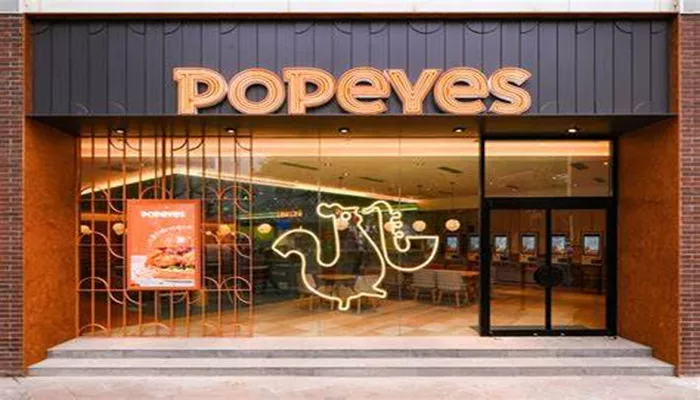Starting a franchise with a successful fast-food brand like Popeyes can be a lucrative business opportunity. However, understanding the potential earnings for a Popeyes franchisee is essential before investing in the brand. This article will break down the key factors that influence how much a Popeyes franchisee can make, including initial investment, location, operational costs, and revenue expectations.
Initial Investment for A Popeyes Franchise
The first factor that affects how much a Popeyes franchisee can make is the initial investment required. Opening a Popeyes restaurant requires a substantial financial commitment, which can vary depending on location and other factors. Generally, the initial investment for a Popeyes franchise ranges between $383,500 to $2.6 million. This investment includes the following key costs:
Franchise fee: The franchise fee is $50,000.
Construction and real estate costs: These can range from $275,000 to $1.5 million.
Equipment and signage: Typically costing around $150,000 to $450,000.
Initial inventory and supplies: Estimated between $15,000 to $35,000.
These figures are significant, but they reflect the high standards of Popeyes and the need for well-located, properly outfitted restaurants.
SEE ALSO: What Time Does Wendy’s Close on Saturday?
Average Revenue of A Popeyes Franchise
The annual revenue of a Popeyes restaurant can vary widely depending on the location, market demand, and the franchisee’s management skills. On average, a Popeyes franchise can generate annual gross sales of around $1.5 million to $2 million. Some highly successful locations may exceed this range, while others might fall below it.
While gross revenue is an essential metric, it’s important to consider that not all of it translates into profit. Several expenses must be deducted before determining the net income for a franchisee.
Operational Costs for A Popeyes Franchise
To calculate how much money a Popeyes franchisee can make, it’s critical to factor in operational costs, which include:
Royalty Fees: Popeyes charges a 5% royalty fee on gross sales. This fee is standard for most franchise systems and contributes to the ongoing support and use of the Popeyes brand.
Advertising Fees: Popeyes franchisees are also required to contribute 4% of their gross sales to national advertising. This helps the brand maintain its visibility and customer base.
Labor Costs: Employee wages, benefits, and training costs can consume a significant portion of revenue, especially in areas with higher minimum wage requirements.
Food and Supply Costs: The cost of ingredients, packaging, and other supplies varies depending on market prices and local suppliers. On average, food and supply costs can account for 30% to 35% of a restaurant’s gross sales.
Rent and Utilities: The location of the franchise plays a big role in rent expenses. Prime locations in urban centers will typically have higher rent, ranging from $5,000 to $15,000 per month, while smaller or suburban areas may have lower rental costs.
Profit Margin for A Popeyes Franchise
After accounting for all operating expenses, the typical profit margin for a Popeyes franchise ranges between 5% to 15% of gross sales. This means that a franchise generating $1.5 million in annual revenue could potentially earn between $75,000 to $225,000 in profit.
Profit margins can be higher for franchisees who operate multiple locations or are skilled at minimizing costs. However, those with higher operational expenses may see lower profit margins.
Factors That Influence A Popeyes Franchisee’s Income
Several factors influence how much money a Popeyes franchisee can make, including:
Location: A well-chosen location with high foot traffic and low competition can significantly boost sales. In contrast, a poorly chosen location may struggle to attract customers, impacting revenue.
Management: Effective management is crucial for running a successful franchise. Franchisees who are hands-on, implement strong operational practices, and maintain high customer satisfaction will likely see better financial results.
Local Economy: The local economy can also affect sales. Areas with higher disposable incomes or strong population growth tend to generate higher sales, while economically distressed areas may face more challenges.
Multi-Unit Ownership Opportunities
Many successful Popeyes franchisees choose to open multiple locations, which can significantly increase their earnings potential.
While managing several stores requires more capital and operational oversight, it also provides economies of scale and increased brand recognition in the market. Multi-unit ownership often leads to higher overall profits, as the combined sales from multiple stores can generate substantial revenue streams.
Conclusion
A Popeyes franchise can be a profitable investment for the right entrepreneur, but the amount of money a franchisee can make depends on various factors such as location, management, and operational costs. On average, a single Popeyes franchise can generate $75,000 to $225,000 in annual profits, with the potential for higher earnings for multi-unit operators. By carefully considering the initial investment, ongoing expenses, and revenue potential, prospective franchisees can make an informed decision about whether the Popeyes brand is the right fit for their financial goals.
Related topics:
- Which Pizza Franchise Makes The Most Money
- How Much to Franchise Jollibee in Manila?
- What Is The New Hamburger Called at Arby’s in 2024

